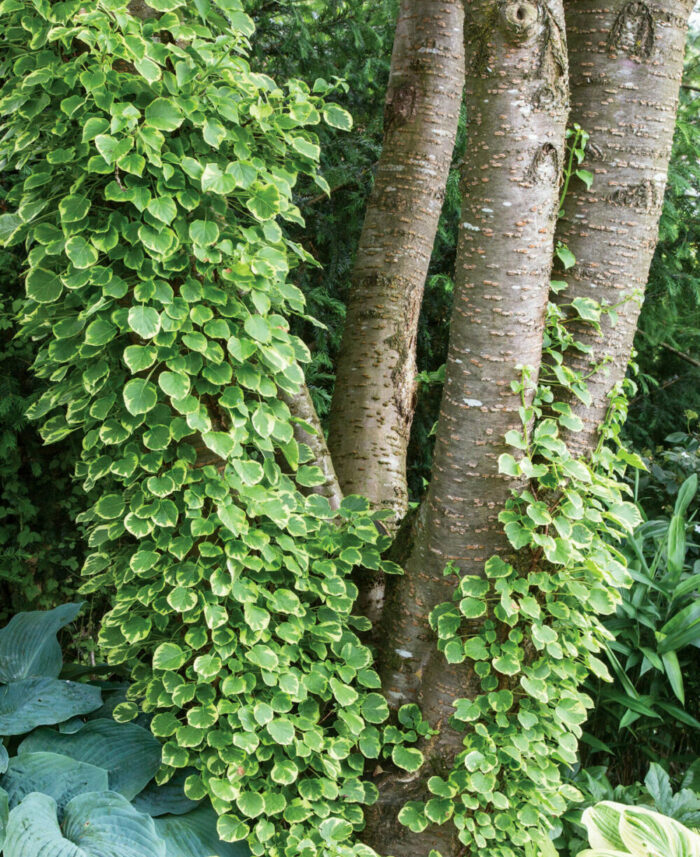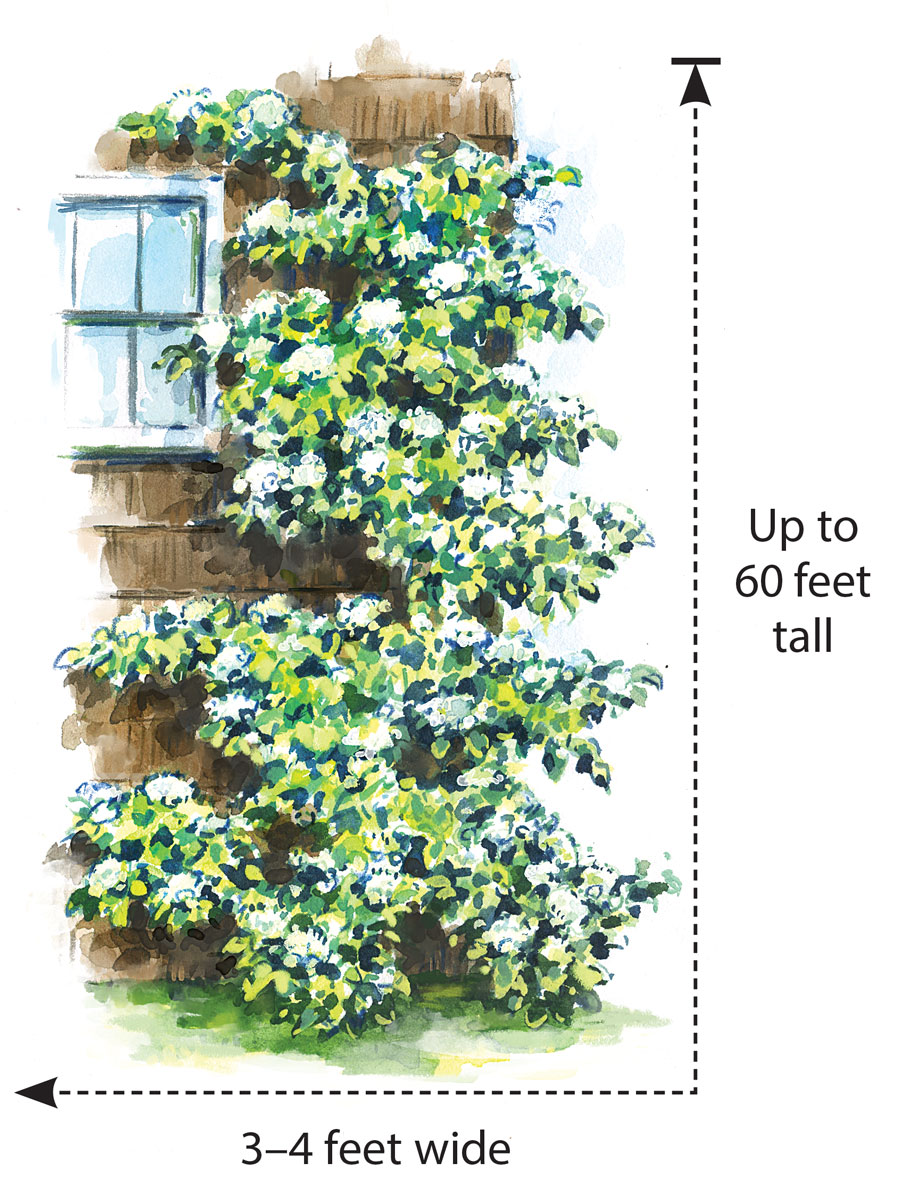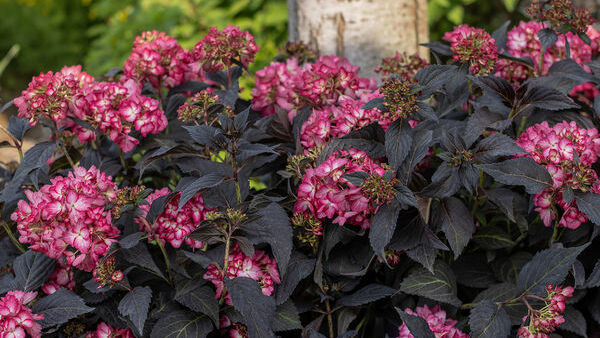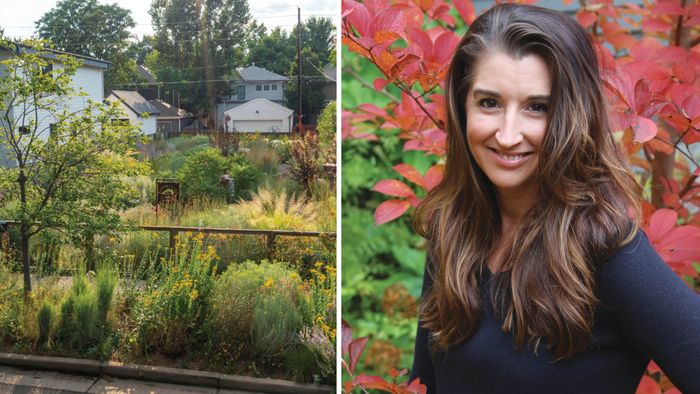
A lively argument (at least at a gathering of solid horticulturists) could be had over crowning the “Queen of Vines,” although that sobriquet has generally been reserved for Her Majesty the clematis. If that leaves another title open, I’ll be the first to nominate climbing hydrangea (Hydrangea petiolaris, Zones 4–8). And while I’m at it, the variegated cultivar ‘Miranda’ deserves its own consideration.
‘Miranda’ is a beautiful two-tone clinging vine that attaches to rough, solid surfaces such as brick or wood by means of little rootlike holdfasts. And contrary to what your neighbor might tell you, those holdfasts don’t pull the mortar out.
I should point out the other physical qualifications ‘Miranda’ offers. The foliage is leathery, a modified heart-shape 2 to 4 inches across, with a dark green center edged by a generous contrasting yellow-chartreuse band. It is quite striking, especially if layered against a darker background. A totally shaded north-facing site has kept the variegation strong all season long for me. An all-day south- or west-facing exposure might bleach the contrast.
If you’re all about flowers, they’re borne in early summer: white, 6 to 8 inches wide, held forth on the outward-reaching lateral branches. These are not the traditional roundy-moundy hydrangea flowers; instead, they are flat-topped, with a ring of larger flowers surrounding the more delicate center ones. They are allegedly fragrant, but I haven’t been overwhelmed by that yet.
While other adhering vines create a flat surface that is perfectly parallel to what they are growing on, climbing hydrangea goes one better. Once it covers the area it’s been granted, it starts generating perpendicular lateral branches. This habit creates depth and shadow that’s visually intriguing. It can give an almost espalier-like “shrub” presence to your surface. With age, the trunks of ‘Miranda’ develop handsome peeling cinnamon bark that’s a stunning addition to any winter landscape.

‘Miranda’ climbing hydrangea
Name: Hydrangea petiolaris ‘Miranda’
Zones: 4–8
Conditions: Partial to full shade; prefers moist, well-drained, loamy soil
Native range: Japan, South Korea, China
Tony Fulmer is chief horticulture officer for Chalet, a specialty nursery in Wilmette, Illinois.
Sources
• Broken Arrow Nursery, Hamden, CT 203-288-1026; brokenarrownursery.com
• Joy Creek Nursery, Scappoose, OR 503-543-7474; joycreek.com
More on hydrangeas
Let’s Argue About Plants Podcast: Episode 12: Hydrangeas with High Marks



















Comments
Log in or create an account to post a comment.
Sign up Log in